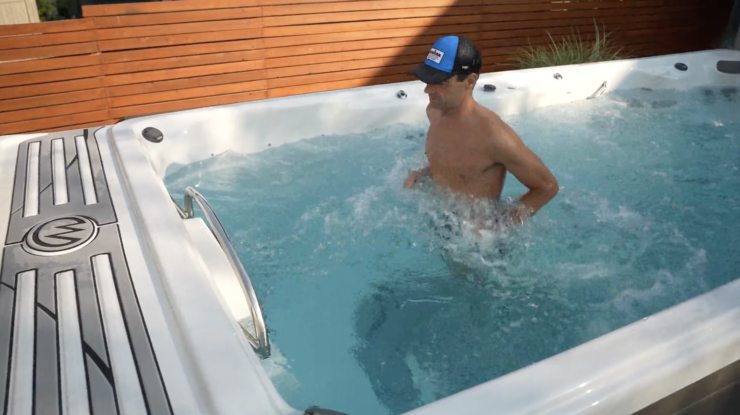A rolled ankle. Lingering swelling and joint inflammation. Stiffness that makes even short walks uncomfortable. Ankle pain can seem easy to write off, until it keeps you from doing the things you love — or even just the things you need to do.
For adults over 50, an ankle injury isn’t just uncomfortable. If not addressed properly, it can increase the risk of falls, take longer to heal, and lead to long-term mobility issues.
As we age, the risk of ankle disorders rises. The Advanced Podiatry Group points to natural wear and tear, along with declining muscle strength and balance, as contributing factors. Conditions like sprains, tendonitis, and arthritis — both osteoarthritis and rheumatoid — become more common and more disruptive.
That’s why early diagnosis and treatment are so important. A podiatrist or physical therapist can help you understand what’s going on and how to move forward safely.
Once you’re cleared for activity, ankle injury rehab in a pool or swim spa can help you get back on your feet. Gentle yet effective, these movements can help restore mobility and rebuild strength, as well as reduce your risk of future injury.
Why the ankle needs extra support as we age
The ankle is a small but powerful joint. It bears your full body weight, keeps you steady on your feet, and adjusts as you move across different surfaces. But as we age, the systems that support the ankle begin to change.
Muscle mass in the lower leg naturally decreases. Tendons and ligaments stiffen. Balance becomes harder to maintain. These changes don’t make you fragile, but they do mean that even a minor ankle injury can take longer to heal and be more likely to happen again.
If you’re over 50, a strong recovery should include more than just rest. You need a plan that supports ankle mobility, strength, and balance — helping your body function the way it’s meant to, with less pain and more confidence.
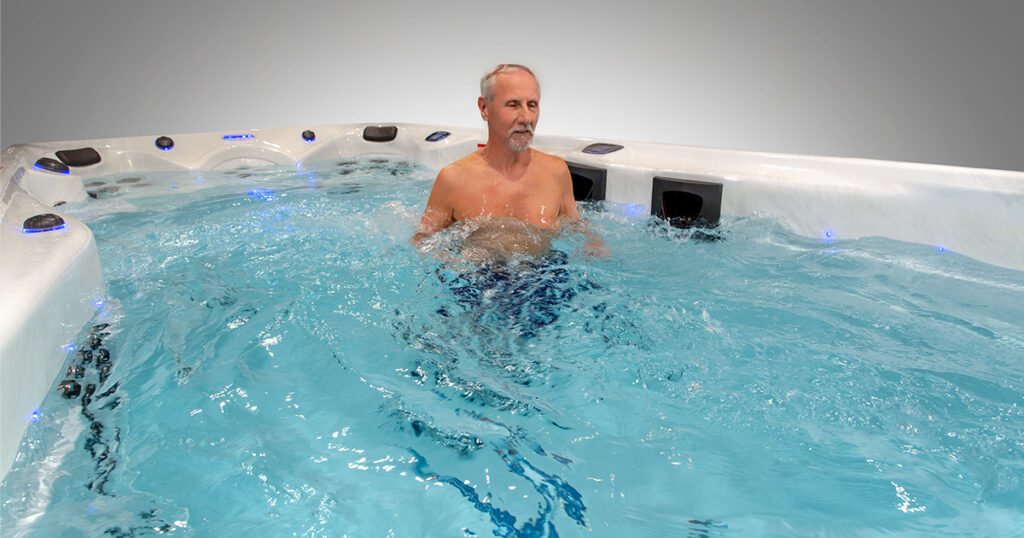
Why choose water exercise for ankle injury rehab?
Getting back to movement after an ankle injury can be intimidating — especially if you’re worried about pain or reinjury. That’s why many physical therapists recommend beginning your post-injury exercises in the water. It’s a safer, more forgiving environment where you can build strength and mobility at your own pace.
Less pressure on your joints
Water supports your body weight, so there’s less stress on your injured ankle. This makes it easier to move, even if your ankle is still swollen or stiff.
A low-impact way to build strength
The resistance of water provides a gentle challenge for your muscles. These low-impact movements help strengthen the ankle joint and surrounding muscles without the strain of weights or high-impact cardio.
Improved circulation and flexibility
Warm water helps increase blood flow to injured tissue and loosens stiff joints — key benefits for older adults working to regain range of motion.
A safer space to practice balance
Falls are a serious concern after 50. In the water, you’re more stable and less likely to lose your footing. That makes it an ideal place to practice balance without the fear of falling.
A Michael Phelps Signature Swim Spa can be an especially effective space for rehab. Nonslip flooring offers traction underfoot. A built-in grab bar and wide ledges give you options for extra support. And with temperature control and an adjustable current, you can customize each session for comfort and recovery.
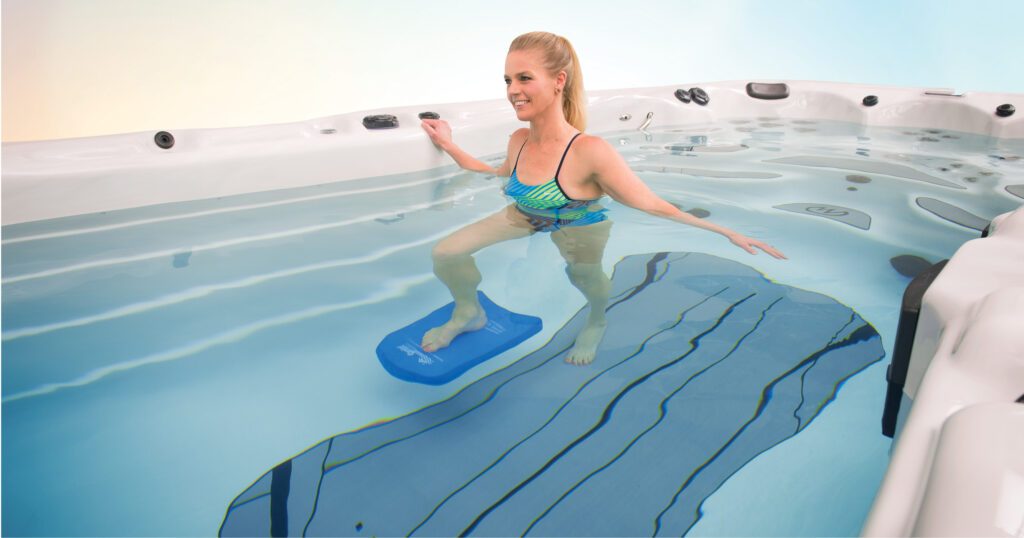
Best ankle injury rehab exercises to do in the water
Whether you’re dealing with a sprain, arthritis, or a slow-healing tendon injury, these water-based exercises are designed to support recovery for adults over 50. Each movement helps improve ankle mobility, rebuild strength, and increase balance — all essential for aging well and moving confidently.
Important: Always consult your healthcare provider before beginning any rehab program.
Ankle circles
Why it helps: Improves ankle mobility and joint flexibility
How to do it: Sit or stand in waist-deep water. Extend one leg and slowly rotate your ankle in large circles. Perform 10 circles in each direction.
Water walking
Why it helps: Builds strength and supports natural movement
How to do it: Walk forward in chest-deep water or against the swim spa’s current. Focus on steady steps, good posture, and even weight distribution. Try side-stepping or walking backward to challenge different muscles.
Heel and toe raises
Why it helps: Strengthens the calf and stabilizing muscles
How to do it: Stand near the wall or grab bar. Rise up onto your toes, pause, and lower. Then lift your toes while keeping your heels down. Repeat for 10 to 15 reps. This is especially helpful for older adults with weak lower legs or balance concerns.
Ankle push-pulls
Why it helps: Supports strength in both flexion and extension
How to do it: Wrap an elastic band around your foot or use the water current to provide resistance. Raise your leg slightly, then flex your ankle back and forth slowly, focusing on controlled movement. Perform 10–12 repetitions per leg.
Single-leg balance
Why it helps: Improves coordination and ankle stability
How to do it: Stand on one leg in waist-deep water. Hold for 30 seconds, then switch. Need more of a challenge? Close your eyes or add small arm movements to engage your core and balance system.
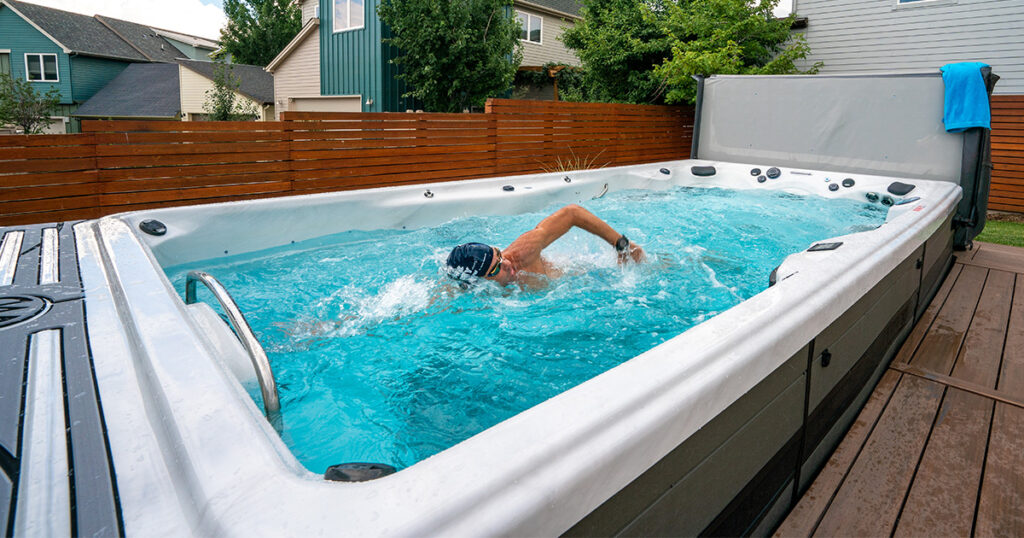
Can you swim with an ankle injury?
In many cases, yes. In fact, swimming might even be encouraged by your doctor or physical therapist.
It’s an excellent way to stay active without putting stress on your ankle. Because you’re supported by the water, you can get your heart rate up and maintain your fitness without overloading the joint. But it’s important to speak with your doctor or physical therapist first, especially if you’re in the early stages of recovery.
Swimming does involve flexing and pointing the ankle, particularly during kicking. For some people, that movement can help restore range of motion and build strength. But if kicking causes discomfort or feels unstable, a pull buoy can be a smart alternative. This small foam float fits between your legs and allows you to swim using just your arms — helping you stay active while protecting the injured area.
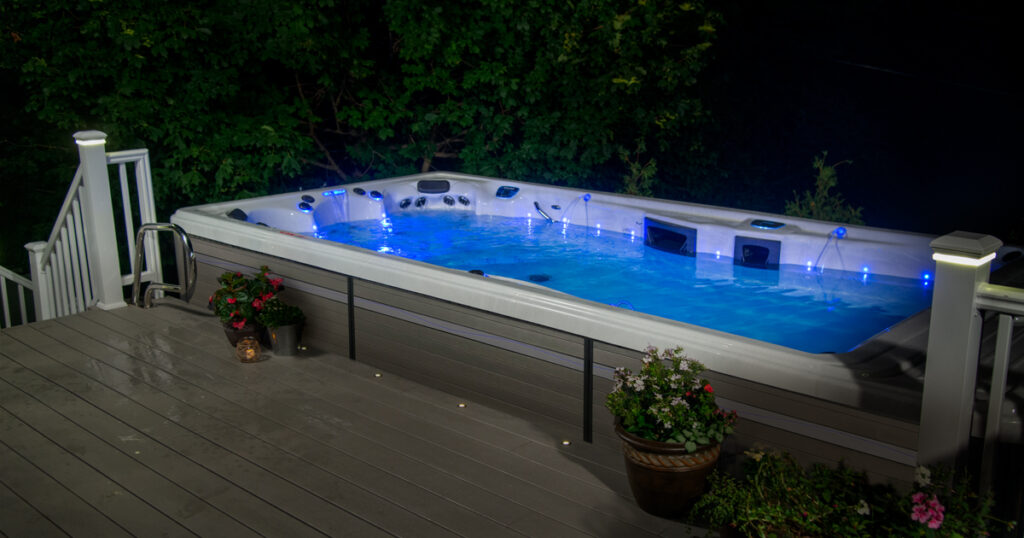
Supporting your recovery — and beyond
Recovering from an ankle injury after 50 takes time, patience, and the right environment. Whether you’re managing arthritis, regaining balance, or trying to prevent future injuries, gentle water-based exercises can support your goals without increasing your risk of pain or reinjury.
Even if you don’t have a swim spa now, the Michael Phelps Signature Swim Spa line is built with wellness and rehab in mind. Features like temperature control, a smooth current, and accessible design make it easier for older adults to stay active, recover safely, and feel strong again.
Want to explore the benefits of water therapy at home? Discover the Michael Phelps Signature Swim Spa line and learn how it can support your recovery, mobility, and long-term wellness.

